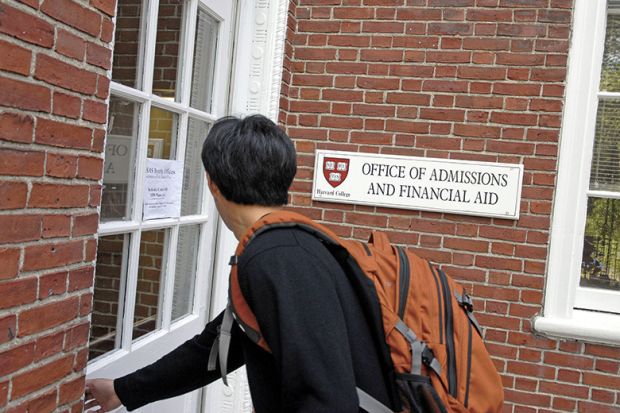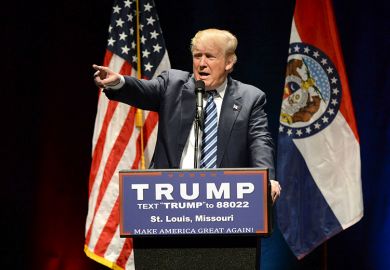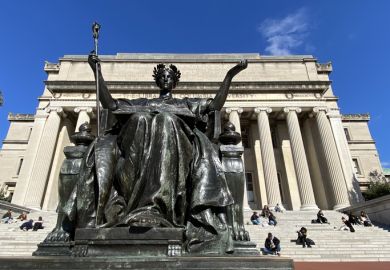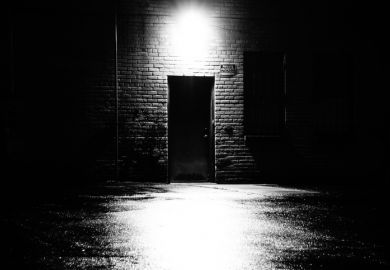Harvard University’s admissions policies go on trial in a federal court in Boston next week over whether they are unfairly biased against Asian-Americans in a bid to boost the enrolment of black students.
The trial, expected to last about three weeks, is the latest in a series of largely unsuccessful high-profile attempts across the US to block higher education admissions practices designed to overtly or indirectly counteract perceived discrimination in society.
The case is unlikely to have a clear or quick outcome, because the court’s decision and orders could be limited to conditions specific to Harvard and any final US Supreme Court ruling on that decision could be years away.
Beyond that, expert predictions about the wider implications of the trial have been scarce, given factors such as the Trump administration’s efforts to challenge Harvard’s admissions policies and the arrival on the Supreme Court of Brett Kavanaugh, who has questioned affirmative action in college admissions.
The lawsuit against Harvard is being orchestrated by Edward Blum, a conservative activist who has played a similar role in other affirmative action cases against US universities. But rather than aid white plaintiffs who feel affirmative action cost them a college acceptance, as he has in the past, Mr Blum has been helping Michael Wang, an Asian-American student rejected by Harvard.
On one basic numerical measure, the argument that Mr Blum’s team will make to US District Court Judge Allison Burroughs, an Obama appointee, could be tough. Asian-Americans comprise about 6 per cent of the US population, but almost 23 per cent of this year’s admissions to Harvard’s freshman class. And the court is expected to hear from several current and former Asian-American students who endorse Harvard’s efforts to create a racially diverse campus.
Some of that testimony is being arranged by Asian Americans Advancing Justice, the US’s largest civil rights and legal services group for Asian-Americans. Its organisers are acting out of a concern that their ethnicity is being used in the case in ways that could hurt their community, especially its lower-income members.
An attorney for the group, Nicole Gon Ochi, said she does not believe Mr Blum is acting on behalf of Asian-Americans. “I think it’s a convenient, politically sympathetic way to try to end affirmative action,” Ms Gon Ochi said.
At the same time, Harvard appears to have vulnerabilities. Internal documents released this summer as part of preparations for the case showed that Harvard admissions officers regularly marked Asian-American applicants low on personal traits – a measure the university acknowledges as a means of choosing from an applicant pool loaded with straight-A students.
The university explained that it gets more than 40,000 applications a year for 2,000 openings and that more than 8,000 of its US applicants had perfect grades, more than 3,400 had perfect standard admission test (SAT) mathematics scores and more than 2,700 had perfect SAT verbal scores.
Lawrence Bacow, who began this summer as Harvard’s president, said in a statement this week that Harvard’s admissions process “does not discriminate against anybody”. But Harvard has also said that race is one factor among many in its selection process, because of the value of a student body that contains a variety of backgrounds, interests, experiences and expectations.
Past US Supreme Court rulings have upheld that position as permissible under the US Constitution. Universities in states where local laws forbid such considerations have tried alternative methods to accomplish the same goal, such as giving priority to low-income students or reserving a spot for students from each high school in the state.
But the experience in states such as California – where voters in 1996 backed a ban on affirmative action in public college admissions – shows that indirect alternatives are a poor substitute. Black enrolment at the University of California, Berkeley was 10 per cent at the time of the 1996 vote and has fallen now to about 3 per cent.
Register to continue
Why register?
- Registration is free and only takes a moment
- Once registered, you can read 3 articles a month
- Sign up for our newsletter
Subscribe
Or subscribe for unlimited access to:
- Unlimited access to news, views, insights & reviews
- Digital editions
- Digital access to THE’s university and college rankings analysis
Already registered or a current subscriber? Login







